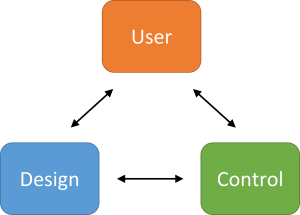
We study robot design and control for user-centered (e.g., human) applications. The interplay of these elements is at the core of our research. How to develop wearable and intelligent machines for users and how to use wearable robots to understand behaviors and movements are some of the questions we ask in our research.
Though ever evolving, our current clinical and scientific investigations are focused on the following areas:
- Clinical translation of powered neck exoskeletons for dropped head syndrome. Although static neck collars are used to treat dropped head syndrome, a condition resulting from neck weakness, many patients seek alternative strategies like resting their head on a reclining chair. Our previous research has led to the world’s first powered neck exoskeleton to restore mobility of the head. We are currently working towards new design, user control, as well as the clinical translation of these powered neck exoskeleton devices from the laboratory to patient homes, leveraging strong collaborations with the multidisciplinary Motor Neuron Disease clinic at the University of Utah.
- Head control retraining for children with cerebral palsy. The sensorimotor functions of children with cerebral palsy, brain lesion acquired at birth or young age, are limited. In the most severe cases, control of the head (e.g., maintain forward gaze) is affected, which delays development and reduces quality of life. We have developed robotic trainers for these patients. Leveraging an ongoing collaboration with the Kauri Sue Hamilton School, we aim to explore therapeutic interventions using these robotic trainers for affected patients to improve, for example, their daily function and learning experiences at school.
- Robotic interventions for spinal surgeries. Spinal deformities can arise from many causes (e.g., scoliosis, neurodegenerative disorders, acute injuries), and surgical corrections are often required to realign the spinal joints. Currently, technics include using traction which applies distraction forces onto the spinal joint through an apparatus attached on the torso or the head. However, technology is outdated using a weighted rope, which leads to safety risks and low success rate in achieving target alignments. Through collaboration with neurosurgeons at the University of Utah, we have developed robotic systems aimed to discover new surgical techniques that will improve the clinical outcomes and safety of this surgical intervention.
- Wearable robotic gait assistance and rehabilitation for stroke. Of the 650,000 people who survive a stroke each year, 40% will walk asymmetrically due to hemiparesis, which increases the metabolic cost and risks of falls. Despite advances in robotic gait training, most focused only on the affected leg where the weight of the machine added often offsets any benefit gained. As a result, many devices are exclusively for use in the laboratories. Leveraging biomechanical simulations, we have discovered that a spring-like element added between feet of a stroke gait model will help transfer energy from the unaffected leg to the affected one, thereby improving gait symmetry. We are studying effects of this novel lightweight strategy to affect symmetry of gait for stroke patients, ultimately developing devices with lower barrier of access to improve their quality of life.
